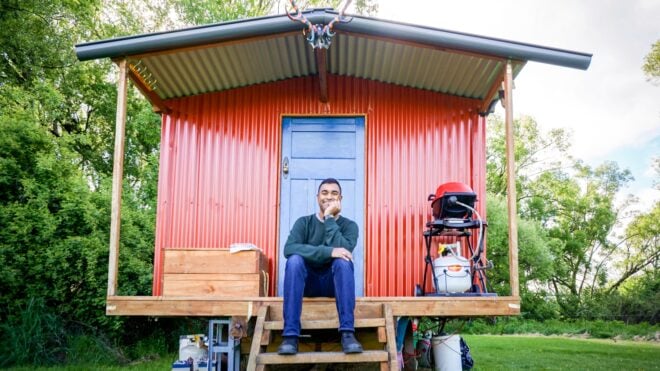
In this article
Seeing your baby or child choking is one of the most distressing feelings for any parent, but especially for one who doesn’t know what to do. Choking on solid food is one of the most common concerns, but don’t rule out toys or other small objects. Learning how to deal with choking and how to do the Heimlich maneuver steps is something every parent should know how to do to overcome a life-threatening event.
What is the Heimlich maneuver?
The Heimlich maneuver is a method that helps dislodge a foreign object from the airways, allowing oxygen to flow freely. The method of placing your hands above the belly button and pushing in and up from behind the choking person is credited to American surgeon Henry Heimlich in 1974.
How to know if someone needs the Heimlich maneuver

When someone is choking, they become very distressed and agitated. If someone is holding or grabbing at their neck, coughing, or crying, they may be choking. It is when someone can no longer cough or cry (and could be turning blue) that they can no longer get oxygen through the airway. This is when to step in with emergency first aid and potentially use the Heimlich maneuver.
“My youngest was always babbling through meals. I was tending to something on the stove and it got so quiet,” Judy Coffey told Mom.com about the moment she knew her daughter needed help. “It’s true that you can’t turn your back for a second with kids.”
Baby choking protocol will not use two hands from behind like an adult or a small child. Instead, abdominal thrusts are done using two fingers and performed just above the navel.
How to perform the Heimlich maneuver on a baby

The Heimlich maneuver should always be second to back blows for an adult or a baby. Back blows use the base of the palm to hit the choking person between the shoulder blades. For babies, cradle their head in one hand using your forearm and leg to support their body, tilting their head down so gravity helps change the directory of the object. Perform the back blows with the other hand. For a child or adult, tilt them over an arm to support them while performing the back blows.
If five back blows don’t work, move on to these Heimlich maneuver steps (abdominal thrusts).
Abdominal thrusts for an infant are done by:
- With the baby face up, support the baby with one hand and arm cradling their head and body
- Tilt the baby using your leg as support, so their head is closer to the floor.
- Place two fingers from your free hand just below the breast bone above the navel.
- Give five forceful thrusts to help expel the foreign object.
- Alternate with five back blows and abdominal thrusts until the item is dislodged.
Follow these steps for the Heimlich maneuver for children and adults three years old and older:
- Position yourself behind the person.
- Make a fist with one hand and place it just above the belly button of the choking person.
- Place the free hand over the fist, so that your arms are now wrapped around the person.
- Pull in toward you and up in a thrusting motion to expel the item.
- Repeat five times, alternating between five back blows and the Heimlich until the item is dislodged.
Choking rescue procedure

Registered nurse Amber Brown shared with Mom.com what she tells her CPR class students. “If you find that your child is choking, encourage them to cough and remain upright. Do not attempt to remove the object as it will oftentimes push the object further down the throat, completely obstructing the airway.”
Brown reminds us that the Heimlich maneuver is designed for children age 3 and older. Smaller toddlers and infants should not have the Heimlich performed and should instead have five abdominal thrusts completed only after trying five back blows. Don’t be alarmed if other stuff comes up in the process, Brown advised. “It is common that children will vomit as the object is being expelled and that is a welcome relief to see as it means the object is coming up so do not panic!” she said.
The best way to learn how to deal with a choking baby is to take a hands-on CPR and first aid class from the American Red Cross.
Note: If a person loses consciousness at all, make sure to call 911 and be prepared to perform CPR.




